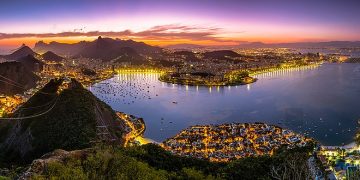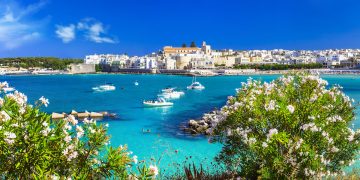Introduction
The Dolomiti Mountains, also known as the Dolomites, stand as one of the most breathtaking natural wonders in the world. Located in northern Italy, this majestic mountain range stretches across the provinces of Trentino, South Tyrol, and Belluno. Known for their dramatic peaks, verdant valleys, pristine lakes, and a rich cultural backdrop, the Dolomites are a UNESCO World Heritage Site and a dream destination for nature enthusiasts, adventure seekers, and photographers alike.
This article delves deep into the allure of the Dolomites, exploring their geological uniqueness, the stunning landscapes they offer, and the myriad of ways in which they captivate the human spirit.
1. The Geological Wonder of the Dolomites
1.1 Formation and Unique Composition
- Ancient Beginnings: The Dolomites were formed around 250 million years ago as coral reefs under a prehistoric ocean. The tectonic activity eventually uplifted these reefs, creating the dramatic peaks we see today.
- Dolomitic Rock: Named after the French geologist Déodat Gratet de Dolomieu, the range is composed of dolomite, a calcium-magnesium carbonate mineral. This unique composition gives the mountains their distinctive pale color.
- Erosion and Sculpting: Over millions of years, wind, water, and glacial activity have sculpted the Dolomites into jagged peaks, sheer cliffs, and stunning rock formations.
1.2 UNESCO World Heritage Status
The Dolomites earned UNESCO recognition in 2009 for their extraordinary natural beauty and geological significance. Their varied landscapes showcase a harmonious interplay of rugged peaks and soft meadows, embodying the essence of Alpine splendor.
2. Iconic Peaks and Majestic Landscapes
2.1 Tre Cime di Lavaredo (Three Peaks of Lavaredo)
One of the most iconic symbols of the Dolomites, these three dramatic peaks rise sharply from the surrounding terrain. Their stark verticality and accessibility make them a favorite for climbers and hikers.
2.2 Marmolada: The Queen of the Dolomites
- Highest Peak: At 3,343 meters (10,968 feet), Marmolada is the highest peak in the Dolomites.
- Glaciers: The Marmolada Glacier, though shrinking due to climate change, remains a stunning feature that reflects the sunlight and enhances the mountain’s grandeur.
2.3 Seceda Ridge
With its distinctive jagged ridges and panoramic views, Seceda is a popular spot for photography and exploration. The ridge provides an unrivaled vantage point to take in the beauty of the surrounding peaks.
2.4 Alpe di Siusi (Seiser Alm)
This vast high-altitude meadow is one of the largest in Europe and offers sweeping views of the surrounding peaks. In summer, the area bursts into life with colorful wildflowers, while winter blankets it in pristine snow.
3. Serene Lakes and Reflective Waters
3.1 Lago di Braies (Pragser Wildsee)
Often called the “Pearl of the Dolomites,” this emerald-green lake is surrounded by towering peaks and dense forests. Its serene waters make it one of the most photographed spots in the region.
3.2 Lago di Carezza (Karersee)
Known as the “Rainbow Lake,” Lago di Carezza’s waters change color throughout the day, reflecting the Latemar mountain range and lush forests.
3.3 Lago di Sorapis
Accessible via a moderately challenging hike, this turquoise lake is set amidst a dramatic amphitheater of rocky peaks, offering a surreal and otherworldly ambiance.

4. Seasonal Splendor of the Dolomites
4.1 Spring: A Time of Renewal
As the snow melts, the valleys and meadows come alive with blooming wildflowers and rushing streams. This season offers vibrant greenery and fewer crowds.
4.2 Summer: Peak Adventure Season
- Hiking: The Dolomites offer an extensive network of trails, ranging from leisurely walks to challenging climbs.
- Climbing and Via Ferrata: The region is famous for its via ferrata routes, which allow climbers to ascend steep cliffs with the aid of fixed cables and ladders.
4.3 Autumn: A Golden Retreat
The forests of larch and beech trees transform into a kaleidoscope of golds and reds, contrasting beautifully with the rugged gray peaks.
4.4 Winter: A Snowy Wonderland
- Ski Resorts: The Dolomiti Superski area is one of the largest ski regions in the world, offering over 1,200 kilometers of slopes.
- Snowshoeing: Winter provides opportunities for serene exploration of snow-covered trails.
5. Flora and Fauna: Biodiversity in the Dolomites
5.1 Alpine Meadows and Rare Plants
The Dolomites are home to a rich variety of plant life, including edelweiss, alpine poppies, and rare orchids. These blooms add a splash of color to the rugged terrain.
5.2 Wildlife Encounters
- Mammals: Chamois, ibex, and marmots are commonly spotted in the region.
- Birds: Golden eagles, bearded vultures, and alpine choughs are among the avian species that grace the skies.
6. Cultural Connections to the Landscape
6.1 Ladin Culture
The Dolomites are home to the Ladin people, who have preserved their unique language, traditions, and architecture. Their charming wooden houses and rich folklore add a cultural dimension to the natural beauty of the region.
6.2 Culinary Delights
Local cuisine reflects a blend of Italian, Austrian, and Ladin influences. Dishes like speck, polenta, and canederli (dumplings) are staples that showcase the region’s cultural diversity.
7. Activities That Immerse You in the Scenery
7.1 Paragliding and Hot Air Ballooning
Soaring above the peaks provides a bird’s-eye view of the stunning landscapes.
7.2 Photography Tours
The interplay of light and shadow on the rugged peaks makes the Dolomites a paradise for photographers.
7.3 Cycling and Mountain Biking
With winding mountain roads and challenging trails, the Dolomites are a popular destination for cyclists.
8. The Interplay of Light and Shadow
8.1 Enrosadira: The Alpenglow Effect
During sunrise and sunset, the Dolomites take on a pink or orange hue, a phenomenon known as enrosadira. This magical effect is a result of the unique mineral composition of the rocks.
Conclusion
The Dolomiti Mountains are more than just a natural destination; they are a testament to the beauty and power of the Earth’s geological and ecological processes. From their jagged peaks and serene lakes to their vibrant meadows and diverse wildlife, the Dolomites offer an unparalleled experience that combines natural splendor with cultural richness. Whether you’re hiking the rugged trails, skiing the snowy slopes, or simply marveling at the view from a quiet meadow, the Dolomites leave an indelible mark on every visitor.
What makes the Dolomiti Mountains so unforgettable is not just their beauty but the way they invite you to immerse yourself in nature’s artistry.





















